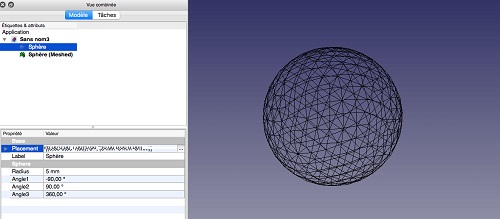
- #MAC FREECAD MACROS TUTORIAL HOW TO#
- #MAC FREECAD MACROS TUTORIAL INSTALL#
- #MAC FREECAD MACROS TUTORIAL CODE#
- #MAC FREECAD MACROS TUTORIAL FREE#
The same Conda environment can then be configured within your P圜harm project via the following GUI path: P圜harm Preferences -> Project Interpreter -> Gear Icon -> Add -> Conda Environment -> Existing EnvironmentĬhoose the location of the Python executable from the Conda environment. Print('Python %s on %s' % (sys.version, sys.platform)) Inside the FreeCAD Python console you can then check the Python environment using: import sys To use the FreeCAD binary built with Conda it needs to be launched from the terminal: conda activate freecad-0.18-mac Users/vectronic/miniconda3/etc/profile.d/conda.sh" > ~/.bash_profileĪ Conda environment with FreeCAD can then be built with: conda create -n freecad-0.18-mac freecad
#MAC FREECAD MACROS TUTORIAL INSTALL#
Install Minicondaĭownload Miniconda installer from and install it: bash Miniconda3-latest-MacOSX-x86_64.shĮcho ". The following steps will get P圜harm and FreeCAD using the same Python installation.
#MAC FREECAD MACROS TUTORIAL CODE#
Unfortunately however, having code completion for FreeCAD modules still eludes me… Installation This allows the same Python syntax and semantics to be applied (especially important when switching from Python 2 to I have been able to setup the same Python environment with FreeCAD and P圜harm using this great project You can manually install extensions, however, it is much simpler to just use the Addon Manager.Beyond simple scripts, FreeCAD macro development really benefits from using a Python IDE. Macros from both repositories can be installed via the Addon Manager directly from FreeCAD. The second one is the Macros recipes page from which you can pick some useful macros to add to your FreeCAD installation. The first one is the official peer-reviewed macro repository on GitHub.
#MAC FREECAD MACROS TUTORIAL HOW TO#
See How to install macros for a more detailed description. Next time you start FreeCAD, the macro will appear under the "Installed Macros" item of the Macro menu. You can then save your macro the same way as you save a FreeCAD document. Simply create a new macro, edit it, and paste your code. You can also directly copy/paste python code into a macro, without recording GUI action. See Customize Toolbars for a more detailed description. This, added to the power of python scripting within FreeCAD, makes it possible to easily add your own tools to the interface. This way you can make your macro become a real tool, just like any standard FreeCAD tool. Once your macro is created, all this can be done via the Tools → Customize menu. FreeCAD provides much better ways to use your macro, such as assigning a keyboard shortcut to it or putting an entry in the menu. Of course it is not practical to load a macro in the editor in order to use it. You macro is always saved to disk, so any change you make, or any new macro you create, will always be available next time you start FreeCAD. To execute your macro, simply press the execute button on the toolbar while your macro is in the editor. In the edit macros dialog, you can see the python code that has been recorded, and, if you want, make alterations to it. Press the record button, give a name, let's say "cylinder 10x10", then, in the Part Workbench, create a cylinder with radius = 10 and height = 10. button, which links to the Addon Manager. New macros can be installed using the Addons. If you edit a macro, it will be opened in an editor window where you can make changes to its code. There you can manage your macros, delete, edit, duplicate, install or create new ones from scratch.

Macro dialog, listing the macros available in the system You can now access the macro dialog with the edit button. When you are done, click the stop recording button, and your actions will be saved. It is very simple to use: Press the record button, you will be asked to give a name to your macro, then perform some actions. On it you have 4 buttons: Record, stop recording, edit and play the current macro.
#MAC FREECAD MACROS TUTORIAL FREE#
The main tool for making macros is the macros toolbar. 2) Planner5d 3) FreeCAD 4) AutoCAD 5) Open SCAD 6) QCAD 7) LibreCAD 8) SketchUp Free 9) NanoCAD 10) TinkerCAD 1) Adobe Substance 3D Adobe Substance 3D is a bunch of smart, creative apps that include Painter, Designer, and Sample app.

Those commands are what can be recorded in a macro. You will see that in FreeCAD, every action you do, such as pressing a button, outputs a Python command. In particular, you should start with these pages:Įnable the console output in the menu Edit → Preferences → General → Macro → Show scripts commands in python console. See the Power users hub to learn more about the Python programming language, and about writing macros. A collection of macros written by experienced users is found in the macros recipes page. py extension, FreeCAD macros should have the. Since macros are in reality a list of Python commands, you can also edit them, and create very complex scripts. You simply record actions as you do them, then save those actions under a name, and replay them whenever you want. Macros are a convenient way to reproduce complex actions in FreeCAD.


 0 kommentar(er)
0 kommentar(er)
